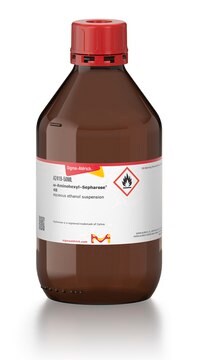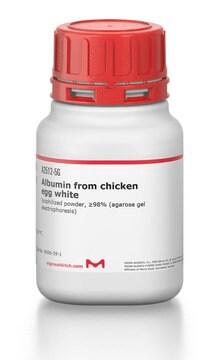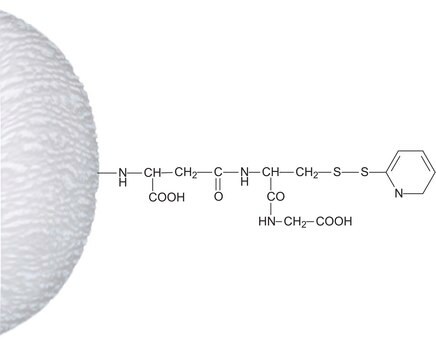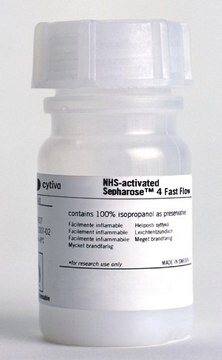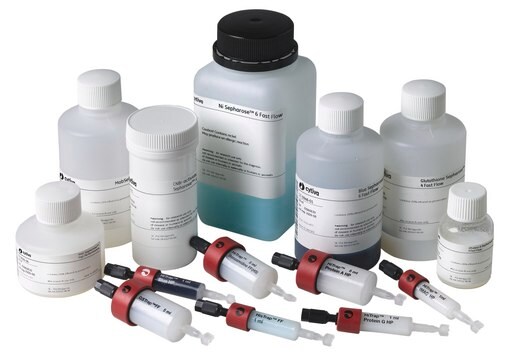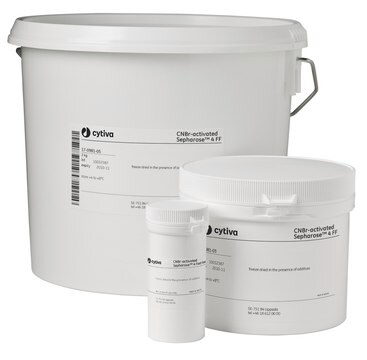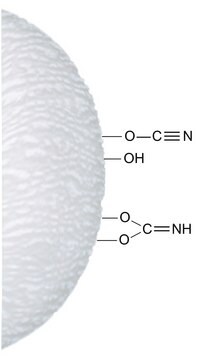A6017
ω-Aminohexyl–Agarose
saline suspension
Synonyme(s) :
Omega-Aminohexyl-Agarose, 1,6-Diaminohexane–Agarose (N-linked), 6-Aminohexyl–Agarose
About This Item
Produits recommandés
Source biologique
plant
Forme
saline suspension
Ampleur du marquage
≥5 μmol per mL
Technique(s)
affinity chromatography: suitable
Matrice
cross-linked 4% beaded agarose
Activation de la matrice
cyanogen bromide
Fixation de matrice
amino of 1,6-diaminohexane
Espaceur de matrice
1 atom
Capacité
≥5 mg/mL binding capacity (bovine serum albumin)
Adéquation
suitable for chromatography
Température de stockage
2-8°C
Vous recherchez des produits similaires ? Visite Guide de comparaison des produits
Description générale
Application
Actions biochimiques/physiologiques
Forme physique
Autres remarques
Mention d'avertissement
Danger
Mentions de danger
Conseils de prudence
Classification des risques
Eye Dam. 1 - Skin Irrit. 2
Code de la classe de stockage
10 - Combustible liquids
Classe de danger pour l'eau (WGK)
WGK 3
Point d'éclair (°F)
Not applicable
Point d'éclair (°C)
Not applicable
Équipement de protection individuelle
Eyeshields, Gloves, multi-purpose combination respirator cartridge (US)
Certificats d'analyse (COA)
Recherchez un Certificats d'analyse (COA) en saisissant le numéro de lot du produit. Les numéros de lot figurent sur l'étiquette du produit après les mots "Lot" ou "Batch".
Déjà en possession de ce produit ?
Retrouvez la documentation relative aux produits que vous avez récemment achetés dans la Bibliothèque de documents.
Les clients ont également consulté
Notre équipe de scientifiques dispose d'une expérience dans tous les secteurs de la recherche, notamment en sciences de la vie, science des matériaux, synthèse chimique, chromatographie, analyse et dans de nombreux autres domaines..
Contacter notre Service technique